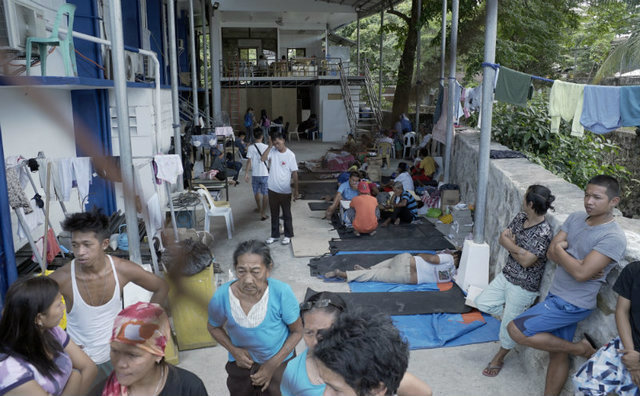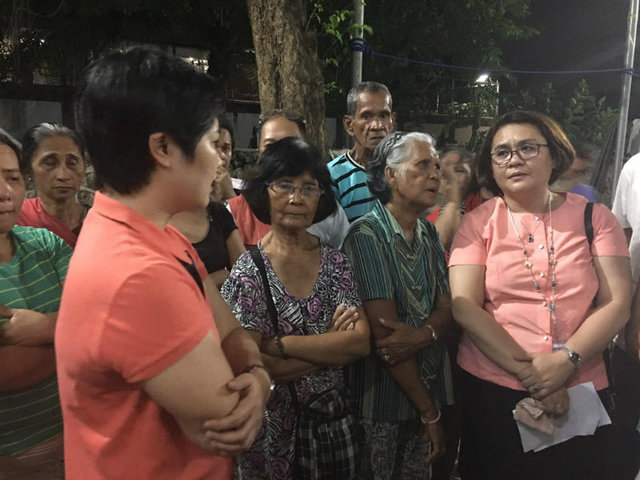From Rappler (Apr 13):
Bad or good intel: 5 questions on Abu Sayyaf presence in Bohol
The military foils an Abu Sayyaf attack in Bohol. But it's hard to cheer when it let a notorious terrorist leader slip out of its watch.
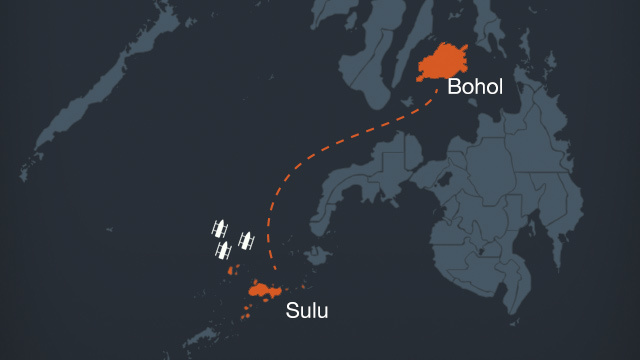 Abu Sayyaf leader Muamar Askali and 10 of his men boarded 3 pump boats from Indanan, Sulu, the night of April 6, "insiders" told the military. When they went missing for several days, the generals got worried.
Four days later, on the night of April 10, residents of Inabanga town in faraway Bohol reported the presence of boats and heavily armed men who were purportedly welcomed into 3 houses owned by Muslim converts in the community.
A day later, at 5 am, clashes began between authorities and the terrorists led by the notorious Muamar Askali, the daring and media-savvy Abu Sayyaf leader who collected multi-million-dollar ransom money in exchange for their foreign hostages.
Askali was among the 6 terrorists killed
Abu Sayyaf leader Muamar Askali and 10 of his men boarded 3 pump boats from Indanan, Sulu, the night of April 6, "insiders" told the military. When they went missing for several days, the generals got worried.
Four days later, on the night of April 10, residents of Inabanga town in faraway Bohol reported the presence of boats and heavily armed men who were purportedly welcomed into 3 houses owned by Muslim converts in the community.
A day later, at 5 am, clashes began between authorities and the terrorists led by the notorious Muamar Askali, the daring and media-savvy Abu Sayyaf leader who collected multi-million-dollar ransom money in exchange for their foreign hostages.
Askali was among the 6 terrorists killed. Armed Forces chief General Eduardo Año congratulated his men for dealing a blow to the terrorist group they had been working hard to eliminate. He assured the public that the 5 remnant Abu Sayyaf are being pursued and no longer pose threat. (READ:
10 killed as gov't forces foil Abu Sayyaf attack in Cebu)
"Abu Rami is an Abu Sayyaf subleader and their known spokesman. Abu Rami is a young, aggressive, and upcoming leader of the Abu Sayyaf who has the potential of being the next leader of the group," Año said.
But it's hard to cheer for the military that let a notorious Abu Sayyaf leader slip out of its watch.
1. Was there good intel?
Año, a
veteran intelligence officer, acknowledged the military could have done more with better intelligence information.
"It's very ideal if we are able to intercept them before they arrived in Inabanga, Bohol. But intelligence work is like solving a big puzzle. You only have bits of parts from one end to the other. Your job is to project or paint the picture," Año said.
When they received information that Askali and his men left Indanan on April 6, he said they had no idea where they planned to go.
"When we receive an intel report, we validate it. We cross-check. It's not like we're watching a CCTV and we see everything. We have to validate the intent of the Abu Sayyaf, whether they will go to Sabah, Palawan, Iloilo, or as far as Luzon. Those are the immediate questions," said Año.
They waited for the information on where Askali and his men were going. It came late. Meanwhile, the military put its units nationwide on heightened alert.
"Sometimes information would come late so you react late also. But still it’s not late because we are able to counter them," Año said.
2. What was the Abu Sayyaf's plan?
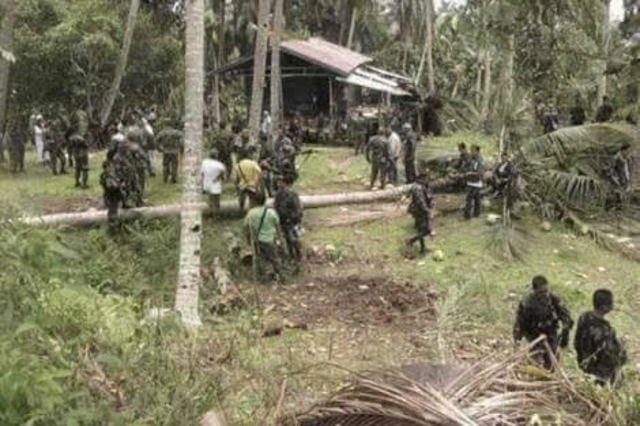 INABANGA, BOHOL. The Abu Sayyaf Group led by Muamar Askali was reportedly welcomed by Muslim converts in the community
INABANGA, BOHOL. The Abu Sayyaf Group led by Muamar Askali was reportedly welcomed by Muslim converts in the community
The alternate scenario, if the local residents did not report the presence of the armed men, would have been a national crisis that would again raise the international profile of the Abu Sayyaf and put the country in a bad light.
Año had pictured the Abu Sayyaf's plan in his mind. It was to be an Easter Sunday attack in a nearby resort in the wee hours of the morning. The local terrorist group had often taken advantage of the Holy Week break because of high tourist arrivals.
They arrived in Bohol on Monday, but they had to acclimatize to the area first, be familiar with the surroundings, and send the contacts to targeted resorts.
"Each boat is good for 10 to 12 persons. If they are 11, they are expecting another 4 or 5 persons per boat. That is 10 to 12 kidnap victims," he said.
Año said they tried to repeat their feat in Samal Island in September 2015. Askali's group kidnapped two Canadians and a Norwegian at an upscale resort in Davao province. Canadians
John Risdell and
Robert Hall were beheaded after failing to meet ransom demands. They released
Norwegian Kjartan Sekkingstad after receiving US$638,000 in ransom.
"It's like Samal. Hindi kidnapping kaagad (It's not immediate kidnapping). It would take days, probably Easter. Our counteractions are very fast They were immediately neutralized," said Año.
3. Why Bohol?
But why did the Abu Sayyaf target Bohol? Authorities are now investigating a resident, who married a woman from Lanao and converted to Islam, and one of those who allegedly welcomed the Abu Sayyaf to the community.
He escaped during the siege.
The Abu Sayyaf planned to attack the same route before, according to former Philippine Navy chief Alexander Pama.
"The ASG operating in Bohol? This is not surprising at all," Pama said in a Facebook post.
Pama said he was the commander of the Naval Task Group Stingray when intel provided them a "detailed sea jacking plan of a passenger fast craft plying the Siquijor-Dumaguete-Dipolog route" after the notorious Dos Palmas kidnapping incident in 2001.
"We, TG Stingray, were waiting for them to come up particularly in the Bohol-Siquijor-Dumaguete-Dipolog corridors. They never ventured up though. I guess we deterred and preempted their plans," Pama narrated.
Bohol is the perfect target because of the influx of tourists, said Año.
"If you look at the mind of the Abu Sayyaf, they are just simple people. They just want to get kidnap victims for money. Where can they get victims? They assess kung saan mas madali (where it is easiest). Nakita nila (They saw that) Bohol and Cebu are tourist destinations during the summer," Año said.
It was harder for them to operate in their traditional areas in the waters in southern Philippines because of the better coordination between the Philippines, Malaysia, and Indonesia.
4. Did US have specific information about the planned attack?
On Sunday, April 9, the United States embassy issued a travel warning against Central Visayas. Año said part of the embassy's information came from the military.
"We monitored several plans and we shared that with our foreign counterparts. What they do with that information is entirely their own," said Año.
Año said both the military and the police have "for some time now" been following up on a "series of information" on the Abu Sayyaf's plans to target "tourist areas to sow terror and potentially abduct people.
While they downplayed the US advisory, Año said the Western Mindanao Command in Zamboanga City and the Central Command in Cebu had been "zealously" working with their local counterparts.
"On our part, the Armed Forces of the Philippines and the Philippine National Police, we made these preparations as early as Friday. On Saturday we already sent alert warning memo to our troops. That's why mabilis 'yung reaction ng mga tropa natin (That was why our troops were quick to respond)."
4. Why deploy so many assets against 11 Abu Sayyaf?
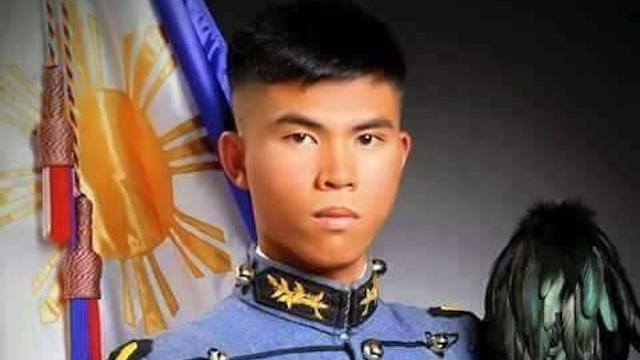 KILLED IN ACTION. 2Lt Estelito Saldua belongs to the 47th Infantry Battalion that clashed with the Abu Sayyaf Group in Bohol. He is a member of PMA Class 2015.
When they confirmed the presence of the Abu Sayyaf in Bohol, Año called Centcom chief Lieutenant General Oscar Lactao to tell him that all assets were available to him.
They flew in from Manila a team from the Joint Special Operations Group (JSOG), the most elite among the military's elite units, along with several choppers to conduct air strikes against the small but heavily armed terrorists.
"At that moment, we still didn’t know the whole picture if there was really just 11 of them. As they say, when you fight an enemy, you should be prepared and make all available forces ready. 'Yung makita lang nila mag-surrender na sila sa takot (You want to impress them with your firepower and force them to surrender out of fear). If they choose to fight it out, we have very good air assets in our possession,"
KILLED IN ACTION. 2Lt Estelito Saldua belongs to the 47th Infantry Battalion that clashed with the Abu Sayyaf Group in Bohol. He is a member of PMA Class 2015.
When they confirmed the presence of the Abu Sayyaf in Bohol, Año called Centcom chief Lieutenant General Oscar Lactao to tell him that all assets were available to him.
They flew in from Manila a team from the Joint Special Operations Group (JSOG), the most elite among the military's elite units, along with several choppers to conduct air strikes against the small but heavily armed terrorists.
"At that moment, we still didn’t know the whole picture if there was really just 11 of them. As they say, when you fight an enemy, you should be prepared and make all available forces ready. 'Yung makita lang nila mag-surrender na sila sa takot (You want to impress them with your firepower and force them to surrender out of fear). If they choose to fight it out, we have very good air assets in our possession," Año said.
They did fight it out in Inabanga, Bohol. Three soldiers and a cop – including junior officer Second Lieutenant Estelito Saldua who graduated from the military academy only last 2015 – were killed.
Most of them were killed in the first salvo of the fight on Tuesday morning.
5. How can the military improve?
The Abu Sayyaf's foray into Bohol underscores the need to boost the assets of the Philippine Navy.
"Our country is an archipelagic nation. We really need naval assets to conduct maritime security. In our modernization program, the priority is the Philippine Navy," Año said.
The best operation
No matter its shortcomings, the military succeeded in foiling the Abu Sayyaf's planned attack in Bohol. The operation in Inabanga will surely win medals for the soldiers who saved the country from another internatioal embarrassment.
But the best military operations are those that don't really win awards, said Pama.
"Very good intel and effective deterrence will always be the best option although there will be no medals because there are no encounters. More importantly, however, there are no lives lost as in this incident."
http://www.rappler.com/newsbreak/in-depth/166855-abu-sayyaf-philippines-bohol-military-intelligence
